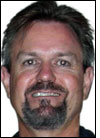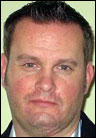Jan 20, 2010A growing number of hospitals have deployed a real-time location system (RTLS) to track assets, patients and personnel. Now, Applied Wireless Identifications Group (AWID) and Pramari are offering a system they deem a low-cost alternative to RTLS, which generally employs battery-powered active RFID, ultrasound or infrared ID tags. The AWID/Pramari Asset Tracking solution, which utilizes passive EPC Gen 2 tags, would be quick to install, the companies report, and would allow hospitals to know when assets pass through or approach doorways. The system, using Pramari's Rifidi Edge Server, could then trigger alarms, automatically lock doors or transmit alerts to designated staff members.
Pramari and AWID will demonstrate the system at RFID Journal's RFID in Health Care conference, to be held on Jan. 28 in Dallas, Texas.
Last year, AWID began selling its products with Pramari's Rifidi Edge Server (see Pramari Launches Free Open-Source RFID Middleware). This middleware collects data from AWID's RFID readers, filters that information and directs it to other systems that can then use the data for business processes. Rifidi Edge Server works not only with RFID interrogators, but also with bar-code scanners, sensors and other hardware, such as cameras. The AWID/Pramari Asset Tracking solution was created in response to requests from systems integrators and other resellers of AWID's EPC Gen 2 readers and antennas.
"People have indicated [to AWID] that health-care facilities want to use passive tags to track assets," says Brian Pause, Pramari's VP of business development. AWID's customers, many of whom are security systems integrators for hospitals, have sought a low-cost security solution they can offer their health-care industry customers, to track assets as they approach an exit, which could be scaled up over time and not require a great deal of time, expense or infrastructure to install, explains Bill Arnold, AWID's director of strategic sales. "All they wanted was a way to keep track of high-value items with passive tags," he says.
The server is designed to filter data from the readers and send that information to a user's back-end system, where business rules can be applied. Once the assets are fitted with RFID tags, the user can then determine the chain of events to follow in response to reading a specific tag—for example, sending an e-mail to security, setting off an alarm or triggering security cameras to begin recording. The tag read could also trigger an automatic locking of doors, in order to prevent the tagged item from leaving the premises.
For those who attend RFID in Health Care—Dallas, Pause says, the team will also demonstrate Pramari's Prototyper software, which will be available at no cost, beginning in February. Security resellers, for instance, could install Prototyper onto a laptop, he says, and use it to demonstrate to customers how the system works. The system enables customers to build a system in the software, and to determine how it would work in their actual facility. Hospitals can also download their own building's blueprint into the software, to test how the system might operate in a live installation. At RFID in Health Care, Pramari and AWID plan to hold a drawing entitling the winning company to have the system installed at its facility, and to then use the system for 30 days, free of charge. If the user is happy with the system and wants to keep it after that time, the firm could then pay for the package.
Although designed for asset tracking, Pause says, the system could also be used to track patients, which would require an upgrade to the Edge Server middleware, to determine tag read zones in areas where patients needed to be tracked, as well as the business rules that would need to be built into the system.



